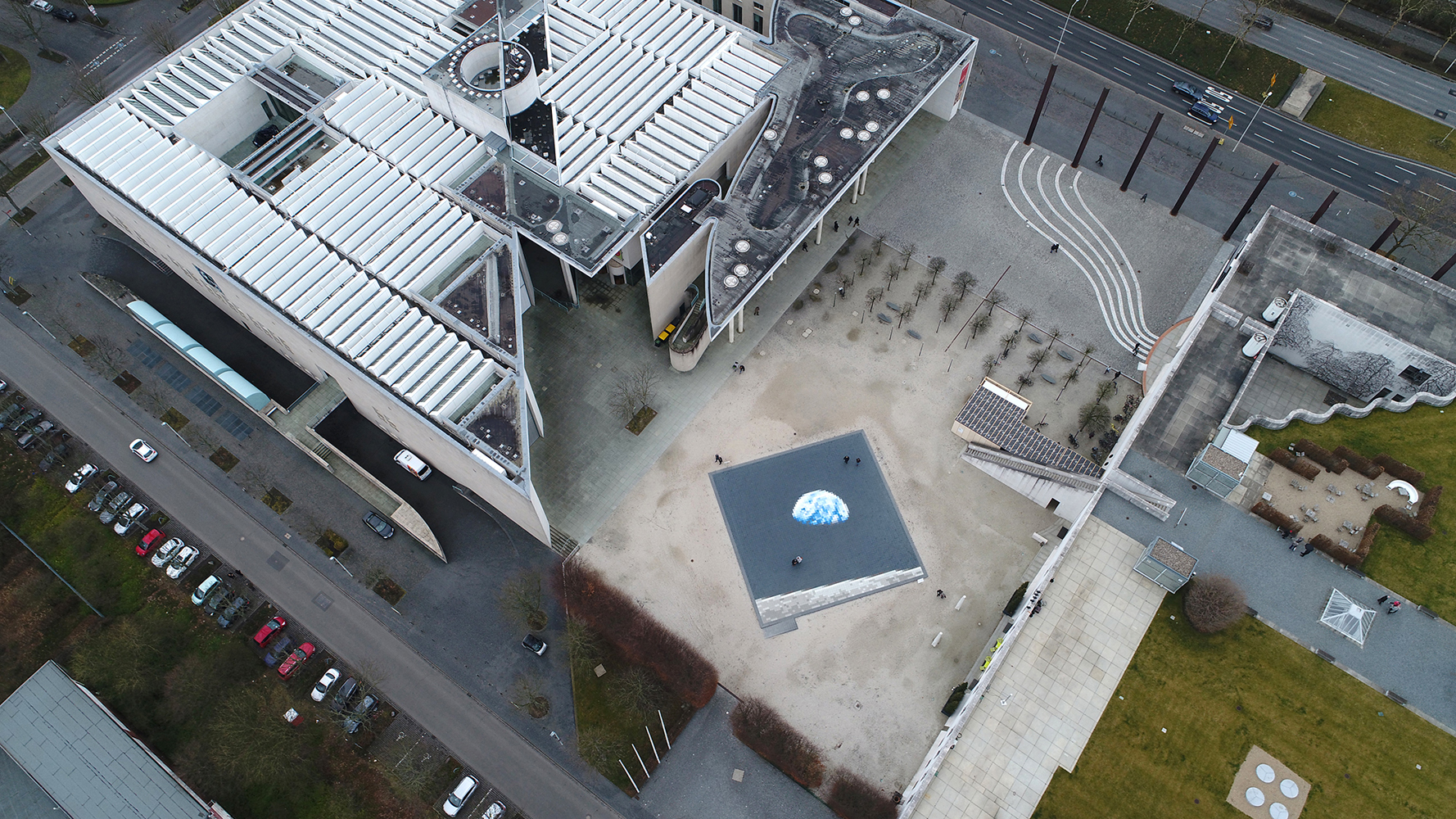0,0064 Megapixel – Planet Earth Is Blue And There’s Nothing I Cant’t Do
Floor piece: 6400 square floor tiles, each 25 x 25 cm, total expanse 20 x 20 m
Floor paint in different colors: 14 shades of blue, 20 shades of grey as well as white and black.
Parallel to the United Nations Climate Change Conference, which takes place in Bonn in November 2017, and the exhibition Weather Report – About Weather Culture and Climate Science at the Bundeskunsthalle, the artist Achim Mohné presents a thematically related, large-scale work in the forecourt of the Bundeskunsthalle.
Mohné transposes Earthrise, the world-famous photograph of planet earth, from digital space into the physical space of the museum forecourt, by aligning the digital pixels of the image with a corresponding number of concrete floor tiles. He thus recreates a digital image as an analogue, large-scale mosaic composed of 6400 square floor tiles. When seen at ground level, the image is unrecognizable and apparently abstract, but it becomes readable as a pixelated image of earth in aerial photographs and satellite images. The 6400 pixels, each 25 x 25cm in size and adding up to an area of 20 x 20 meters, correspond to a digital camera resolution of just 0.0064 megapixels. Although the floor piece appears not to be aligned with its surroundings, it is situated on a north-south axis so that it is perpendicular to the grid of virtual maps and appears "upright" on virtual globes.
The analogue low-tech format is not recognized by digital spam filters and thus adopted into the data pools of virtual globes such as Google Earth or Apple Maps, which will spread the data worldwide. With the next Google Earth or Apple Maps update, the "new" image will become visible as "earth in space" seen from space. Earthrise is an analogue color photograph taken by astronaut Bill Anders on 24 December 1968 during a lunar orbit of the American Apollo 8 mission. Hailed as the most influential environmental photograph ever taken, it was published in the news magazine Time in January 1969. This pioneering photograph taken from space – and others like it – were the first to bring home the thinness of earth’s atmosphere and to highlight the fragility and vulnerability of our planet. Just a few week later, David Bowie wrote his famous song Space Odyssey:
"For here
am I sitting in a tin can
far above the world
planet earth is blue
and there’s nothing I can do …"
Bowie drew on the image, which has since acquired iconic status and become firmly rooted in our collective memory, as a starting point for his own reflections and to take a stand. Like Bowie, Mohné investigates questions of proximity and distance, inside and outside, up and down, strange and familiar. His use of reversals, filters, adaptations and irritations prompts the viewer to take a closer look. And in times of "fake news", the question of the truthfulness and power of images – or words – is crucial and acts as an appeal to the viewer’s critical faculties. Every change of one’s position, one’s point of view, transforms the(analogue) abstraction into a (digital) concreteness – and vice versa. This sociopolitical statement reminds each and every one of us of our responsibility. The more we engage with something that we initially don’t understand and the more we look at it from different angles.
Details
Floor piece: 6400 square floor tiles, each 25 x 25 cm, total expanse 20 x 20 m, Floor paint in different colours: 14 shades of blue, 20 shades of grey as well as white and black
